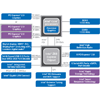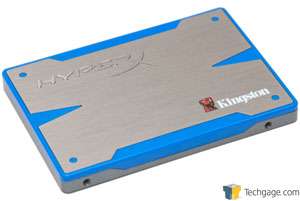- Qualcomm Launches Snapdragon 4 Gen 2 Mobile Platform
- AMD Launches Ryzen PRO 7000 Series Mobile & Desktop Platform
- Intel Launches Sleek Single-Slot Arc Pro A60 Workstation Graphics Card
- NVIDIA Announces Latest Ada Lovelace Additions: GeForce RTX 4060 Ti & RTX 4060
- Maxon Redshift With AMD Radeon GPU Rendering Support Now Available
Battle of the SATA 3.0 Controllers

With newer SSDs now coming well within 10% of maxing out a SATA 3.0 port, it’s important to make sure that your motherboard is properly equipped to handle such drives if planning to buy one. In our testing, while AMD’s and Intel’s solutions offered superb performance, Marvell’s leaved a bit (or a lot) to be desired.
Page 4 – Final Thoughts
After coming to the realization the extent of the issue with Marvell controllers, I contacted a couple of motherboard vendors to get their take on things. When all said and done, the reason that Marvell’s controller doesn’t match up with AMD’s and Intel’s is due to a lack of optimizations rather than some other hardware bottleneck.
This isn’t to say that Marvell isn’t at a disadvantage, however. AMD and Intel both have internal buses to take advantage of, so their SATA 3.0 solutions are basically unrestricted. Marvell on the other hand has to make use of a PCIe lane in order to get its bandwidth, which for a 2.0 lane is 500MB/s. After overhead, that number effectively becomes around 400MB/s, which is about where we saw the drive’s read speed basically cap at.
Given this, bandwidth is one issue. If a motherboard vendor wanted to dedicate two lanes to a Marvell chipset, they likely could, but that wouldn’t magically fix any issue. A trend that became clear throughout our testing is that our write performance using Marvell’s controller was simply awful – less than half of AMD’s and Intel’s more often than not. It’s hard to ignore that.
To be fair to Marvell, the 9172 chipset that we had available is not the latest, as 9182 has begun to trickle out to the market (though I am unsure to which motherboard models). However, given that the performance seen on its chipsets has effectively been unchanged in the two years they’ve been available, we don’t hold out much hope for things to magically change with 9182.
Unlike most of our other performance content, we didn’t run real-world tests here, and the reason for that is two-fold. The first is that I was unable to find the best tests to do this with in the time that I needed to. The usual slew of real-world tests I use weren’t complementary with the SandForce controller, which loves uncompressed data. Secondly, it’s with synthetic tests that we can see the full extent of the performance that an SSD and chipset has to offer, so it made more sense to focus on those.
What does this mean for the real-world, though? For casual users, it might not mean too much, and this problem is one we’re still exploring. It’s clear from our benchmarks though that if you are using a Marvell controller with an SSD like Kingston’s HyperX that offers speeds far beyond what SATA 2.0 is capable of, you are going to be throttled – especially so with the write performance.
Discuss this article in our forums!
Have a comment you wish to make on this article? Recommendations? Criticism? Feel free to head over to our related thread and put your words to our virtual paper! There is no requirement to register in order to respond to these threads, but it sure doesn’t hurt!
Support our efforts! With ad revenue at an all-time low for written websites, we're relying more than ever on reader support to help us continue putting so much effort into this type of content. You can support us by becoming a Patron, or by using our Amazon shopping affiliate links listed through our articles. Thanks for your support!






